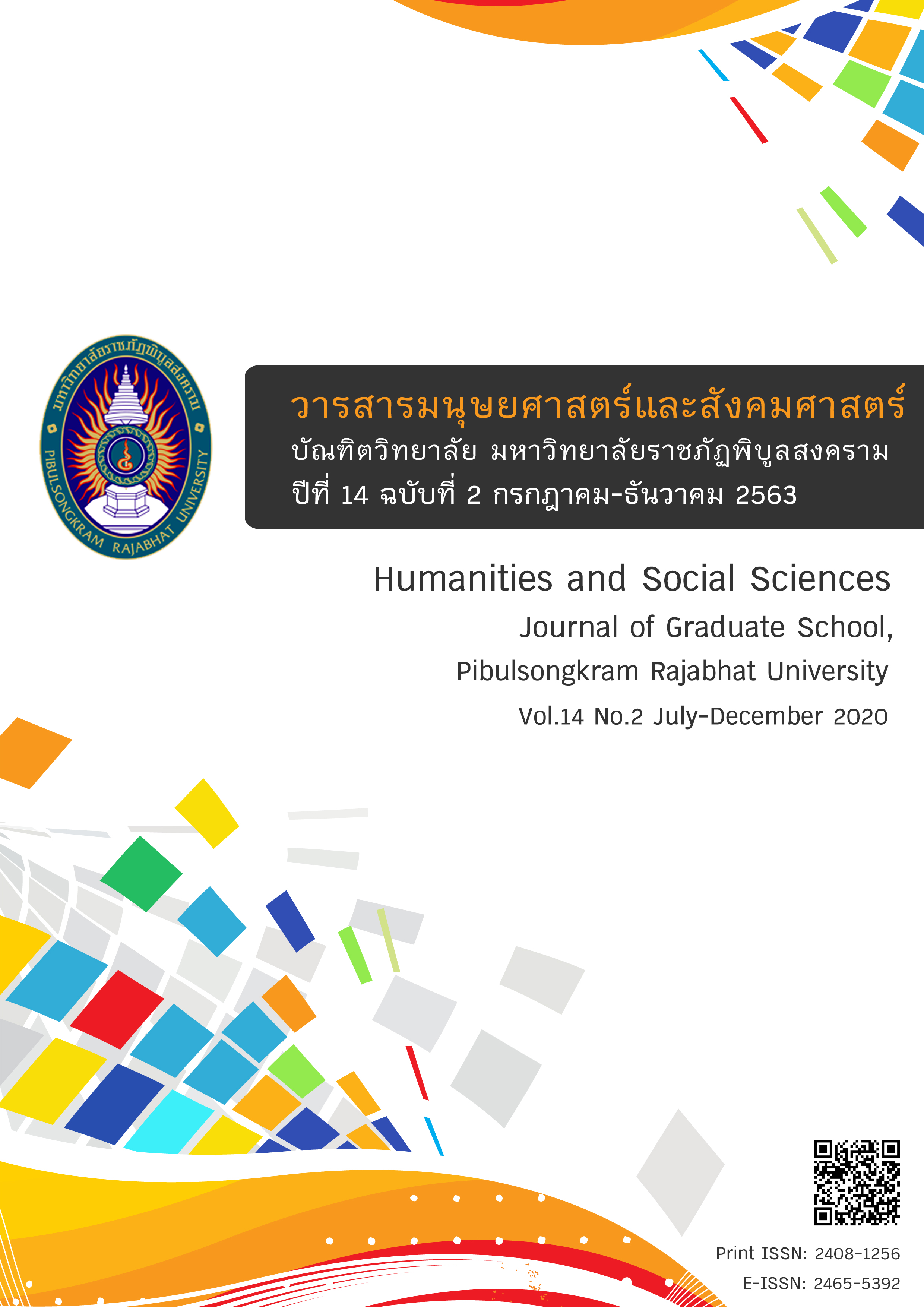New Direction for Managing Conflict by Restorative Practice in Schools
Keywords:
Youth mediator, Conflict, Restorative practicesAbstract
The restorative practice process which used to resolve conflicts in Thai schools has one key success factor: having young students to act as intermediaries as the "mediators" who mediate conflicts by means of restorative practice mechanisms. The students who act as the mediators must have the skills, knowledge, characteristics and expertise in the negotiation process through the training to bring restorative practice processes to manage conflicts in order to maneuver the effective methods. Factors that promote the success of a process are policies, forms, processes, concepts, and best practices in the implementation of restorative practice processes to manage the conflicts in schools consisting of various levels of severity through sharing personal story based on school experience. It has transpired that the main strength of such processes is an empathy which makes the conflict parties to accept and encouraged them to express their feelings and want to cooperate to resolve the conflicts that have occurred. The conflict management from school experiences can be utilized as a way to develop conflict management tools with peaceful methods suitable to the context of the conflicts arising in the schools. Restorative practices-based conflict management that students taking role as the mediators leads to the facts and then the devise of the suitability in action. Each school should be strongly encouraged to use the restorative practice processes to manage the conflicts. It will also develop the attribute in the students to be able to bring such conflict management tools to solve the problems with peace, restorative practices and forgiveness in society. Solving conflicts in schools using restorative practices with youth mediators is the best practice to manage conflicts and violence in schools that can be synthesized into lessons, success, and the limitations of the use of restorative practice processes to manage conflicts and violence in schools to create a model and the tools for the other schools.
References
กิตติพงษ์ กิตยารักษ์. (2549). “ความยุติธรรมเชิงสมานฉันท์: หลักการและแนวคิด” กระบวนการยุติธรรมเชิงสมานฉันท์: ทางเลือกใหม่สำหรับกระบวนการยุติธรรมไทย. กรุงเทพฯ: สำนักงานกองทุนสนับสนุนการวิจัย.
จุฑารัตน์ เอื้ออำนวย. (2553). กฎหมายอาญาขั้นสูง. นนทบุรี: มหาวิทยาลัยสุโขทัยธรรมาธิราช.
ณัฐฐ์วัฒน์ สุทธิโยธิน. (2554). ทฤษฎีอาชญาวิทยา. นนทบุรี: คณะนิติศาสตร์ มหาวิทยาลัยสุโขทัยธรรมาธิราช.
ทองพูล บัวศรี และคณะ. (2553). สรุปสาระสำคัญการศึกษาวิจัยนำร่อง โครงการพัฒนาระบบการดูแลช่วยเหลือนักเรียนในการป้องกันและแก้ไขการใช้ความรุนแรงในสถานศึกษาขั้นพื้นฐาน. กรุงเทพฯ: สำนักงานกองทุนสนับสนุนการสร้างเสริมสุขภาพ.
ประเวศ วะสี. (2544). รัฐบาลใหม่กับการจัดการปัญหาความขัดแย้งในสังคม. นนทบุรี: สถาบันพระปกเกล้า ศูนย์สันติวิธีเพื่อพัฒนาประชาธิปไตย.
วันชัย วัฒนศัพท์, ถวิลวดี บุรีกุล และเมธิศา พงษ์ศักดิ์ศรี. (2545). คู่มือการมีส่วนร่วมของประชาชน: การตัดสินใจที่ดีกว่าโดยให้ชุมชนมีส่วนร่วม = The public participation handbook: making better decisions through citizen involvement / เจมส์ แอล. เครย์ตัน (พิมพ์ครั้งที่ 3). นนทบุรี: สถาบันพระปกเกล้า.
วันชัย วัฒนศัพท์, ศุภณัฐ เพิ่มพูนวิวัฒน์ และสุวธิดา ศรียะพันธุ์. (2548). คู่มือการเจรจาไกล่เกลี่ยในสถานศึกษา. กรุงเทพฯ: ศูนย์สันติวิธีและธรรมาภิบาล สถาบันพระปกเกล้า.
ศรัญญา อิชิดะ. (2545). การศึกษาพฤติกรรมความรุนแรงของนักเรียนวัยรุ่น (วิทยานิพนธ์การศึกษามหาบัณฑิต). มหาวิทยาลัยศรีนครินทรวิโรฒ, กรุงเทพฯ.
สุณีย์ กัลยะจิตร. (2555). การเสริมสร้างประสิทธิภาพกระบวนการยุติธรรมเพื่อสังคมไทย. กรุงเทพฯ: โรงพิมพ์เทพเพ็ญวานิสย์.
สำนักงานราชบัณฑิตยสภา. (2556). พจนานุกรม ฉบับราชบัณฑิตยสถาน พ.ศ.2554 เฉลิมพระเกียรติพระบาทสมเด็จพระเจ้าอยู่หัวเนื่องในโอกาสพระราชพิธีมหามงคลเฉลิมพระชนมพรรษา 7 รอบ 5 ธันวาคม 2554. กรุงเทพฯ: สำนักงานราชบัณฑิตยสภา.
สำนักส่งเสริมงานตุลาการ. (2559). การไกล่เกลี่ยในสถานศึกษา (พิมพ์ครั้งที่ 3). กรุงเทพฯ: สำนักส่งเสริมงานตุลาการ สำนักงานศาลยุติธรรม.
Alan, C. F. (1975). Interpersonal conflict resolution. Scott: Foresman.
Braithwaite, J. (1989). Crime shame and reintegration. Cambridge: Cambridge University Press.
________ (1998). Restorative Justice in M. Tonry (ed) The Handbook of Crime and Punishment. New York: Oxford University Press.
Steinberg, L., & Cauffman, E. (1996). Maturity of judgment in adolescence: Psychosocial factors in adolescent decision making. Law and Human Behavior, 20(3), 249–272.
Thomas, S., Amalee, M., & Parry, W. J. (2012). Child Protection in Educational Settings: Findings from six countries in East Asia and the Pacific. UNICEF: United Nations Children's Fund.
Downloads
Published
How to Cite
Issue
Section
License
Any articles or comments appearing in the Journal of Humanities and Social Sciences, Rajabhat Phibulsongkram University, are the intellectual property of the authors, and do not necessarily reflect the views of the editorial board. Published articles are copyrighted by the Journal of Humanities and Social Sciences, Rajabhat Phibulsongkram University.









